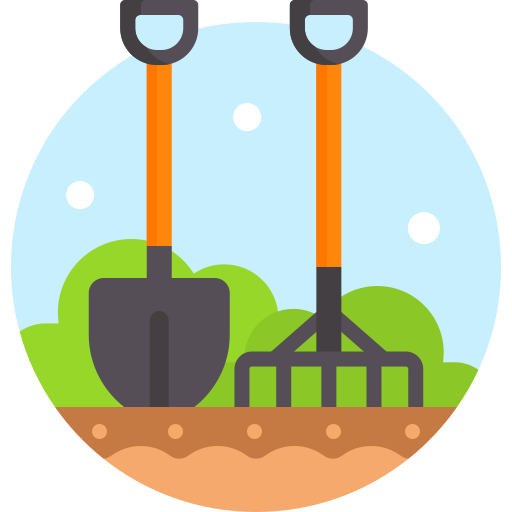I wanted to thank everyone for their kind advice on my first post.
I’ve got my plants in the ground, and I figured I’d give updates on my progress so I can get more guidance and contribute to the content available here on Lemmy.

From the back of the bed by my chain link fence, I’ve got two pairs of two varieties of cucumber, with some lettuce planted in the back corner. I intend to train those cucumbers onto the fence to ensure they didn’t take over the bed.
In the middle, I’ve got one each of rosemary, dill, African basil, sweet basil, and peppermint.
On the front, I’ve got some determinate and semi-determinate tomatoes to include one Celebrity, two Roma, and one Green Zebra plants.
I’ve lined the front and left side with Marigolds, transplanting six plants and seeding some more in the spaces in between.
I’ve also got an indeterminate Whopper tomato plant in a big planter a short way to the left of the bed, and a container with onion starts.
I realize that my depth will likely not be enough for the larger plants, but I’m trying, nonetheless. I’m particularly hoping the determinate tomatoes might work out.
I’ve got pictures of most everything, but I wasn’t sure if it would be obnoxious to post them all.
I watered daily the first week with a can, then deeply watered at the end of the week with a new wand I bought for my hose. The next week, I backed off to ensure I didn’t over-water, but I made sure to do the finger test daily to ensure the soil was staying moist.
With rain over the last few days, my tomatoes have started to flower, though they haven’t gotten much taller. The marigold seeds have broken ground, along with the lettuce and, surprisingly, my onions, with I had started much later.
I’m considering what I need to do next. Two weeks in, I’m thinking some fertilizer is in order. I’m also wondering whether I need to do some sort of spray or something for pests. A few of my cucumbers seem like something is eating the leaves.
I did prune some tomato leaves that were dragging on the ground. I’ve heard it’s important to do that to avoid fungal issues.
One issue I’m concerned about is that there’s a lot of shade in the morning. However, the bed does get full sun in the afternoon for 6-8 hours. I’m hoping the early shade will offset the brutal summer sun here in South Carolina. It gets terribly hot and the UV seems high here, and I’ve seen at least one gardener I follow on YouTube just to the northeast of me who recommends shade cloth for tomatoes and cucumbers as temperatures rise
What do you guys think so far? Would you like some more pictures?


Great start OP! Some blunt honesty: it’s overcrowded to the point that you will not be getting optimal results - but you’ve set yourself up for some good learning experience nonetheless. Further guidance:
Thanks for the tips! I’m going to respond to your points in reverse order:
Looking at the peppermint this morning, it’s sending two runners out along the ground. Do I need to trim these back? It does, indeed, appear to have aspirations to take over the bed 😂
I’m going to be curious how the shade/sun mixture works out, and I think you’re right. The plants are largely healthy, but they’re not exactly exploding in growth. They are still young, though. Hopefully feeding them will help.
I’ve got stakes on all my tomatoes as of last week, and cages my neighbor gave me on three of them. I’ll monitor and add support, but I think I’m good for now.
I’ll look for some insecticide today. With the tiny pests, will I need a magnifying glass to see them? I haven’t seen anything yet, but I’ll be watching carefully.
You caught me–I haven’t properly mulched yet. The organic material in my soil mix appears to have formed kind of a crust at the top that seems like it’s holding in water, though. I was planning on getting some straw to mulch, but the local store was out last weekend, and I had to go out of town yesterday, so I’ll try to grab some today.
With the fertilizer, though, how strong is too strong? The compost I used had a .05-.05-.05 rating (there was supposedly manure in it), so I was worried if I fertilized too soon, I could burn my plants. I know that’s a very low rating, but I used enough to make up closer to half my soil. I also added a big bag of generic Miracle-Gro style garden soil at the very end, and I know that had some fertilizer in it. The tomato and veggie food bags I’ve found had numbers like 20 or 18–is this too much? Also, what about the “shake and feed” products-- are they any good? Finally, on my lettuce and onion seedlings, I’ll want to wait a bit, won’t I, and just fertilize the established plants?
I appreciate any further guidance you and the others have.
All that being said, don’t feel obliged to follow any of this if you don’t want to. You’ve definitely set yourself up to get something edible and tasty, so don’t sweat the details if it starts getting in the way of your fun. Hope it helps and happy gardening!